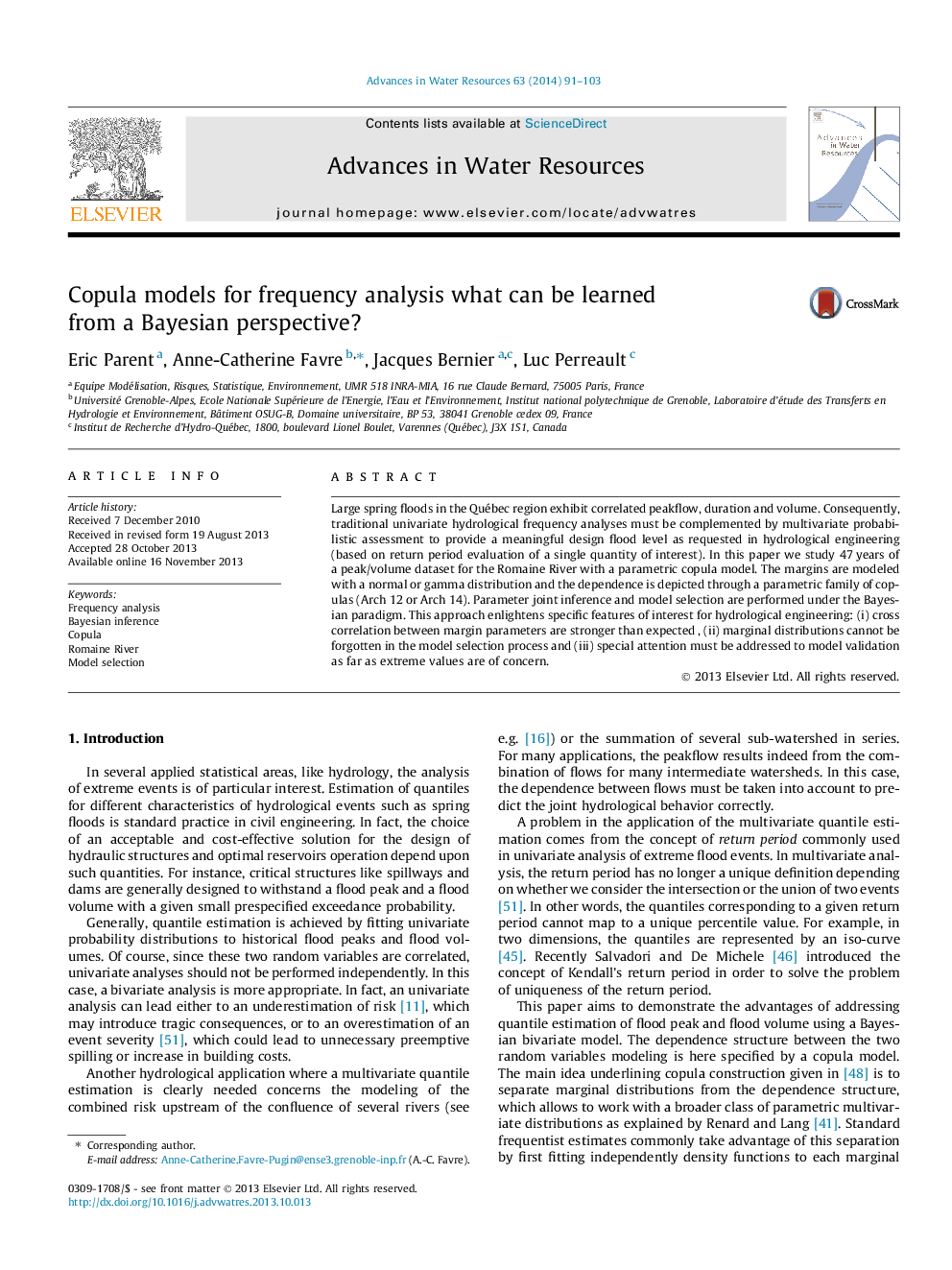| کد مقاله | کد نشریه | سال انتشار | مقاله انگلیسی | نسخه تمام متن |
|---|---|---|---|---|
| 4525551 | 1625646 | 2014 | 13 صفحه PDF | دانلود رایگان |
• The dependence between peak and volume of flow of is modelled with a copula family.
• Parameter joint inference and model selection are performed using a Bayesian method.
• Cross correlation between margin parameters are stronger than expected.
• Marginal distributions cannot be forgotten in the model selection process.
• Special attention must be addressed to model validation in a context of extremes.
Large spring floods in the Québec region exhibit correlated peakflow, duration and volume. Consequently, traditional univariate hydrological frequency analyses must be complemented by multivariate probabilistic assessment to provide a meaningful design flood level as requested in hydrological engineering (based on return period evaluation of a single quantity of interest). In this paper we study 47 years of a peak/volume dataset for the Romaine River with a parametric copula model. The margins are modeled with a normal or gamma distribution and the dependence is depicted through a parametric family of copulas (Arch 12 or Arch 14). Parameter joint inference and model selection are performed under the Bayesian paradigm. This approach enlightens specific features of interest for hydrological engineering: (i) cross correlation between margin parameters are stronger than expected , (ii) marginal distributions cannot be forgotten in the model selection process and (iii) special attention must be addressed to model validation as far as extreme values are of concern.
Journal: Advances in Water Resources - Volume 63, January 2014, Pages 91–103
